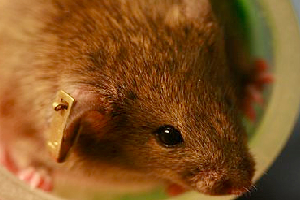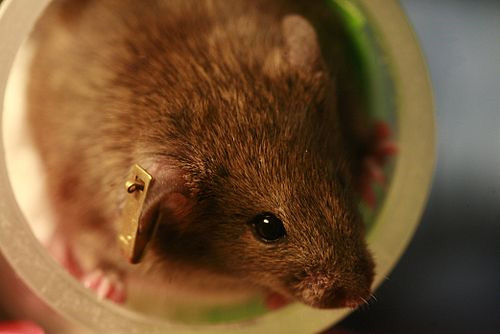A new study out suggests that, at least in mice, the neurotransmitter serotonin may play a big role. Scientists created a strain of mice that lacked most of a certain kind of serotonin receptors in the brain (central serotonin receptors). These mice were healthy and happy. And the males were not at all fussy about whom they hooked up with.
When scientists put wild type* male mice in a cage with other males, they mostly ignored the other mice. The male mice lacking their central serotonin receptors reacted differently. They got busy with the male mice almost every time.
These mice aren’t homosexual though. Given a choice of a male or female, they didn’t really care; they went after both at about the same rate. The genetically altered mice were more bisexual than homosexual.
The researchers did lots of other experiments as well that showed that these mice were not oversexed or lacking anything in particular. They just liked the boys as much as the girls.
What this study tells us is that in mice, serotonin plays a big role in sexual preference through these particular brain neurons. What it doesn’t tell us is if the same thing is true in people. After all, picking a mate is very different in mice as compared to people.
But there are hints that serotonin works differently in the brains of bisexual and homosexual men. For example, certain selective serotonin reuptake inhibitors (or SSRIs) have different effects in bisexual and homosexual men compared to heterosexual men. Still, this isn’t yet enough to finger serotonin use as the main driver of sexual preference in people.
What it does do though is provide scientists some direction for their research. Instead of wading through all 20,000+ genes, they can start out focusing on those that deal with serotonin. This will greatly simplify the research and if serotonin does play a role, then scientists will find the genetic variations involved sooner rather than later.
And frankly, given the slow progress thus far, focusing on serotonin genes won’t set the field back too far. It is probably worth taking the research in this direction.
* Wild type just means a mouse (or any living thing) that hasn’t been tampered with. In this case, it is a run of the mill lab mouse.
A more in depth look at the story from blogger Ed Yong at Not Exactly Rocket Science.
37.7749295 -122.4194155

